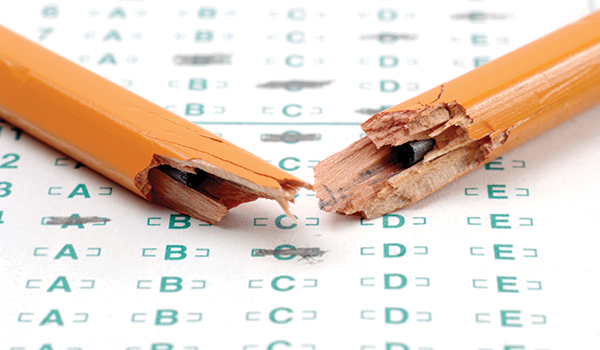
To complement our class discussion on the effect of standardized testing as evident in the NYC public high school entrance exam, I’d like to present a recent argument by Yong Zhao, a Chinese-born professor of education at the University of Oregon. Basically, Zhao’s argument is as follow:
- There is a systematic negligence from policy makers in considering the side effect (negative effect) of any educational policy. Policy makers usually only look for evidence that supports the positive, intended effect. Even when side effects are discovered, they are “not considered an inherent quality of the product” but rather “unintended or unanticipated consequences or results of poor implementation”. Not all side effects can be forecasted, but that does not mean that policy makers should completely ignore side effect as they are doing now.
- This negligence has lead to the US’ uncritical adoption of the “one size fits all” curriculum ( their “Common Core”) from Asian countries that score high on international standardized tests. Zhao argues that Asian systems (e.g. China, South Korea, Singapore), while producing high PISA scores, somehow also produced low confidence in students as a side effect – 70% students in East Asian countries, despite their high PISA scores, worry that they “will get low grades in math”.
- Zhao’s solution is to adopt a medical model of considering both intended and side effect in designing or implementing any policy. In medicine, a new drug is always introduced with both intended and side effect, as required by law. We should also have laws in education that requires explaining both intended and side effects of new policies, especially to “consumers” (teachers, parents, students and the general public). For example, Zhao cites research showing that a curriculum focusing on test score can come at the expense of curiosity and long-term growth. Teachers should know this information to balance their classroom activities, and parents should know this information to decide whether to enroll their children in alternative systems that do not assess by standardized tests.
Personally, I think Zhao’s argument, while solid, is nothing new under the sun. It is just a different way to ask for a cost-benefit analysis, in a more structured, legal-binding way by making it into a law like in medicine. By likening education to medicine, I think Zhao wants to raise the stake – perhaps people are not taking side effects seriously in education because it is not a matter of imminent “life-and-death” like in medicine, but perhaps it is. Education matters to the psychological and emotional well-being of a person, which I would argue that is as important as physical well-being, and psychological distress can result in physical distress.
His other point about the US emulating Asian education is more interesting given our reading this week on Chinese education, which used to emulate the US system and now is trying to forge its own path. We have touched upon “best practice” in class and that it doesn’t seem to work because each country is different, yet it seems like the countries we covered are all trying to adopt something from models they consider “successful”. What do you think about this “best practice” approach? What is the alternative? Is it inevitable to “learn” from other countries while making your own policy? If so, how do you critically integrate “best practice” to fit your own context?
Source:
“What works may hurt: Side effects in education”, Yong Zhao, Journal of Educational, Volume 18, Issue 1, February 2017. http://link.springer.com/article/10.1007/s10833-016-9294-4